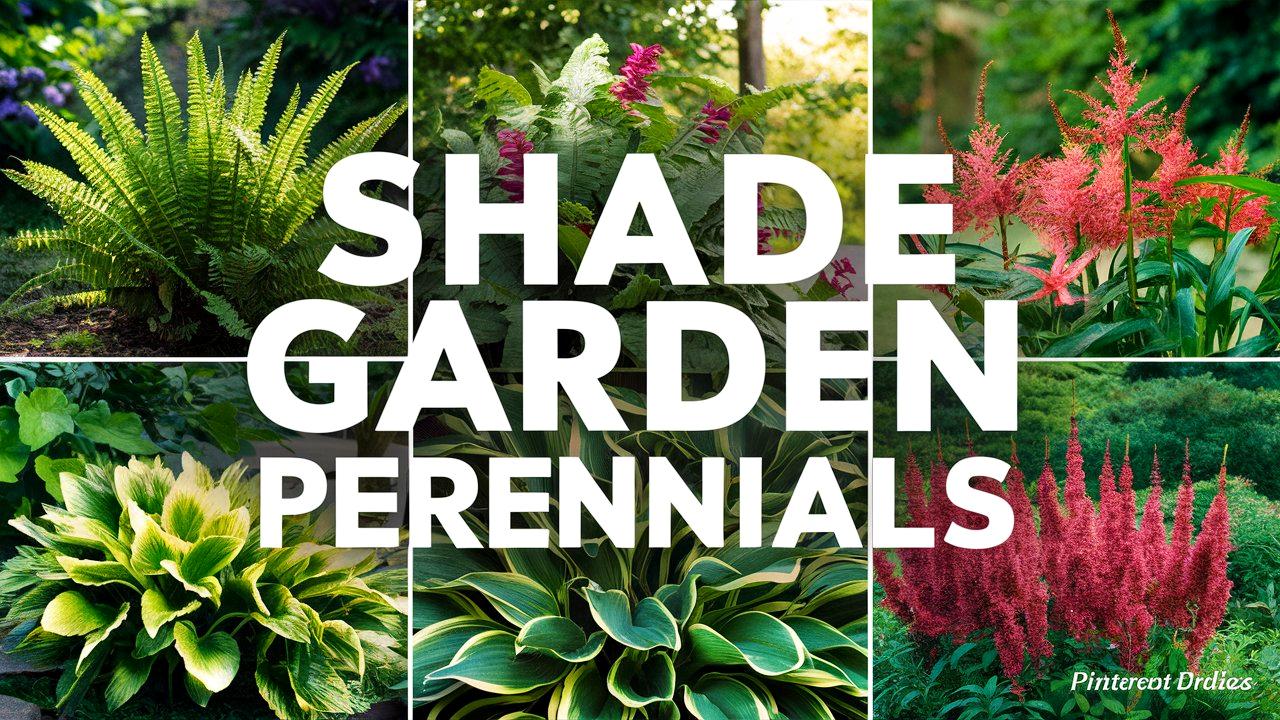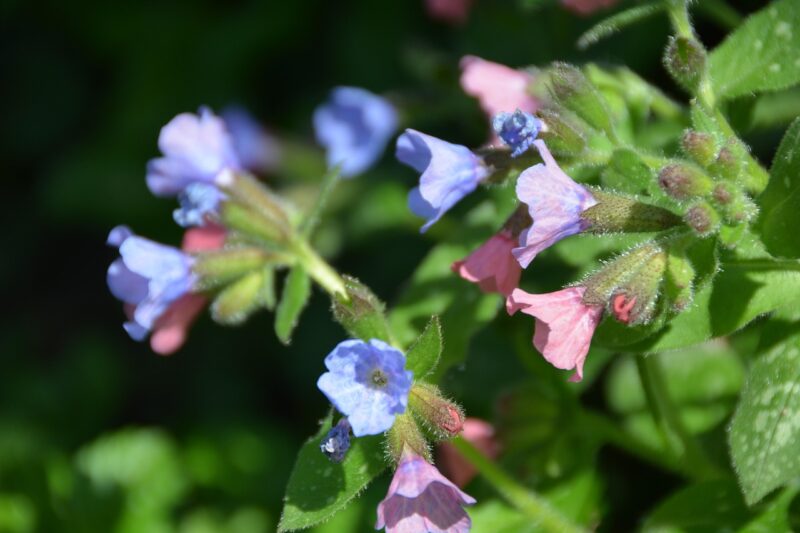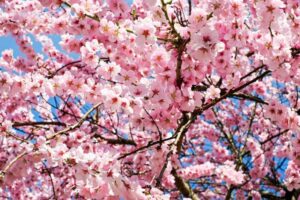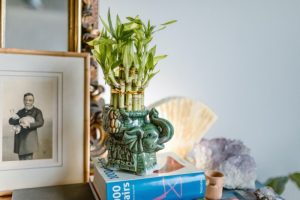Creating a garden in shaded areas can be a delightful challenge. While many may think that sunlight is a requirement for a thriving garden, a well-planned shade garden can be just as vibrant and captivating. Shade garden perennials are plants that can thrive in low light environments, and they add color, texture, and interest to those less sun-drenched spots in your yard.
This guide will explore a variety of shade garden perennials, providing you with valuable insights and tips to make the most of your shaded spaces.
Amsonia
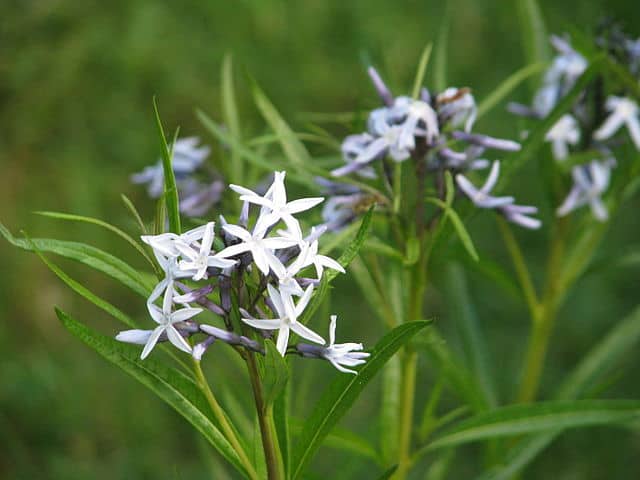
Amsonia, often referred to as blue star, is a striking perennial known for its star-shaped blooms and stunning fall foliage. Native to North America, this plant can thrive in partial to full shade, making it a perfect candidate for your shade garden. The majority of its species produce clusters of light blue flowers in late spring to early summer, which are not only beautiful but also attract bees and butterflies.
The key to growing Amsonia successfully is well-drained soil enriched with organic matter. It’s a low-maintenance plant that flourishes with minimal care. Once established, it’s quite drought-tolerant and disease-resistant. As the summer progresses, the foliage transitions to a lovely golden yellow in the fall, ensuring your garden remains visually interesting year-round.
Vinca
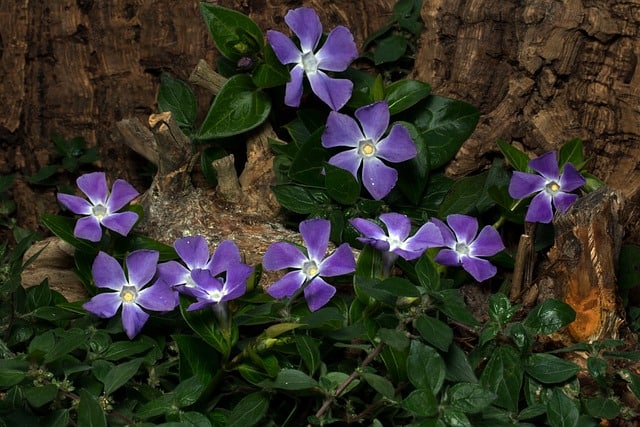
Vinca, also known as periwinkle, is an evergreen perennial that thrives in shady conditions. Its glossy green leaves and charming, five-petaled flowers add a refreshing touch to any garden. This plant is often used as ground cover due to its sprawling nature, making it capable of filling in bare spots quite effectively.
Vinca’s resilience cannot be overstated. It is deer resistant and thrives in poor soil conditions. If you’re looking for a low-maintenance option that can tolerate drought and poor drainage, Vinca is the way to go. It blooms in shades of blue, purple, or white, providing color when other plants have yet to flower in spring.
Astilbes
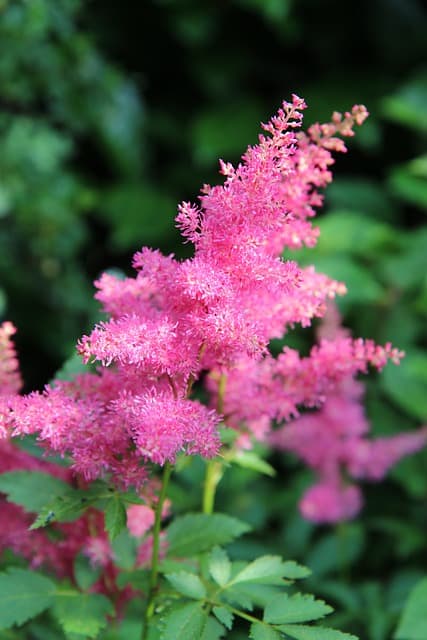
Astilbes are known for their beautiful feathery plumes that can add texture and interest to the shady corners of your garden. Flowering from early to midsummer, these perennials come in various shades, including soft pink, white, and dark red. Their lush foliage serves as a stunning backdrop to the blooms, often resembling fern leaves.
Growing Astilbes requires consistently moist, well-drained soil, and they thrive in partial to full shade. Regular watering during dry spells is crucial, as they prefer a humid environment. Astilbes also attract pollinators, making them an excellent choice for wildlife-friendly gardens.
Balloon Flower
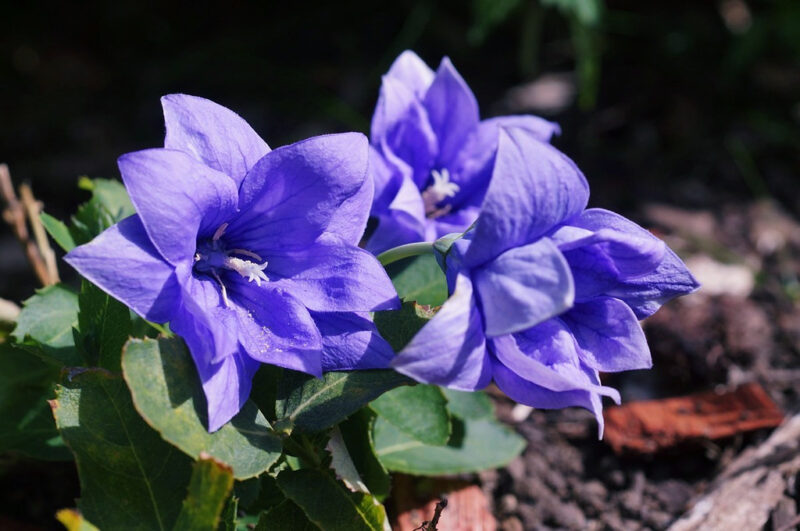
With its distinct balloon-shaped buds, Balloon Flower (Platycodon grandiflorus) is a delightful addition to any shade garden. When these buds open, they reveal large, star-shaped flowers that bloom in shades of blue, pink, or white throughout the summer.
This perennial is adaptable and can grow in a variety of soil types, though it prefers slightly acidic, well-drained soil. Balloon Flower can thrive in partial shade, making it an ideal choice for those tricky spots under trees. Its upright habit and striking flowers will draw the eye and provide a lovely contrast to low-growing plants.
Barrenwort
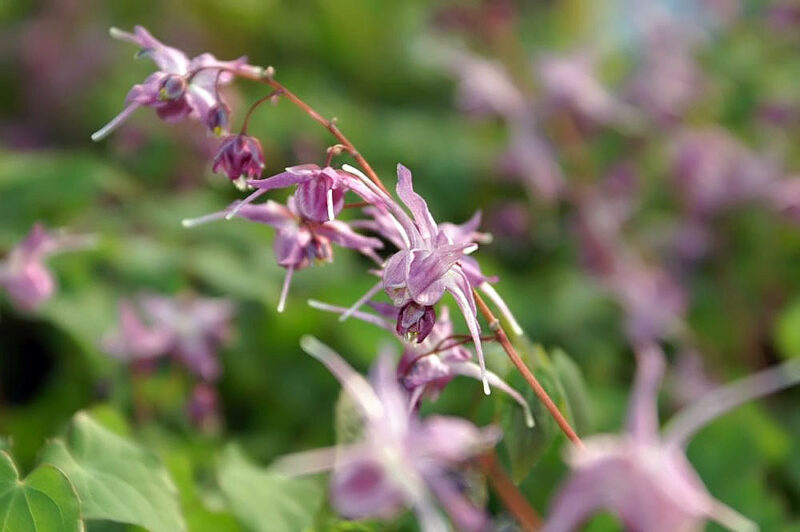
Barrenwort (Epimedium) is a versatile perennial that brings a touch of elegance to shaded niches. With leathery foliage and delicate flowers resembling little orchids, this plant does well in both partial and full shade. It’s a fantastic option for dry, shady areas, often flourishing under tree canopies.
Barrenwort is particularly appreciated for its ability to spread quietly without threatening neighboring plants. Its flowers, which bloom in spring, come in a diverse range of colors, including yellow, white, and pink. Not only is this plant charming, but its foliage often turns vibrant shades of red and bronze in the fall, providing seasonal interest.
Bear’s Breeches
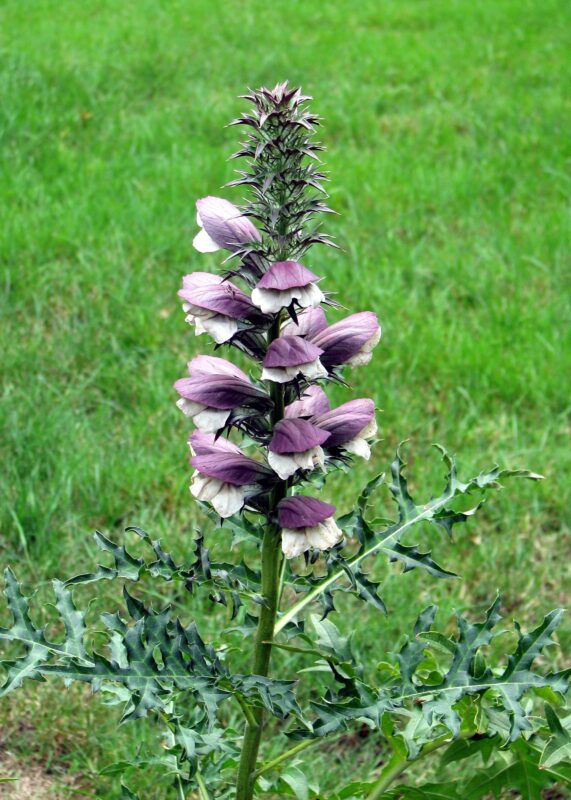
The bold leaves and architectural height of Bear’s Breeches (Acanthus mollis) make this perennial a standout in any shade garden. Known for its majestic, spiky flower stalks that produce white flowers with purple bracts, this plant can add an exotic touch to your landscape.
Bear’s Breeches thrives in well-drained soil and prefers partial shade to full shade. While it tolerates heat, excessive dryness can impact its growth, so regular watering is advised. This hardy perennial also adapts well to urban environments, making it a durable choice for city dwellers looking to green their spaces.
Bergenia
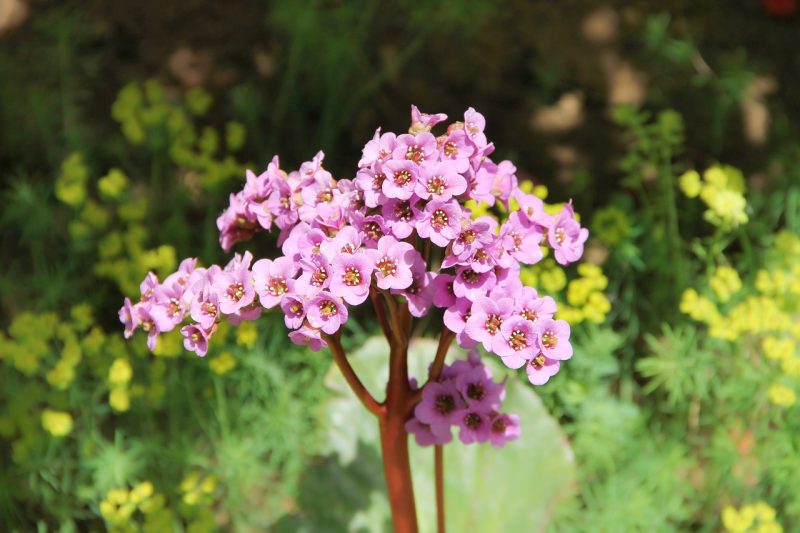
Bergenia, commonly known as pigsqueak due to the noise its leaves make when rubbed together, is a fantastic ground cover for shade gardens. This perennial features glossy, evergreen leaves that produce clusters of pink or white flowers in early spring, reminiscent of lilacs.
Bergenia thrives in well-drained soil enriched with organic matter. It’s a resilient plant that can tolerate summer heat and drought, but it prefers moist environments. Its bold foliage provides a solid foundation for your shade garden while the spring blooms add a sweet note of color.
Bethlehem Lungwort
This cheerful perennial with spotted leaves offers a delightful blend of beauty and practicality. Known for its vibrant flowers that range from blue to pink, Bethlehem lungwort (Pulmonaria) blooms in early spring when the garden is often bare of blooms.
Lungwort thrives in moist, well-drained soil and prefers partial shade. Its ability to effectively suppress weeds while attracting bees and butterflies makes it a valuable asset to any garden. Also worth noting, its attractive foliage makes it a lovely ground cover throughout the year.
Bletilla
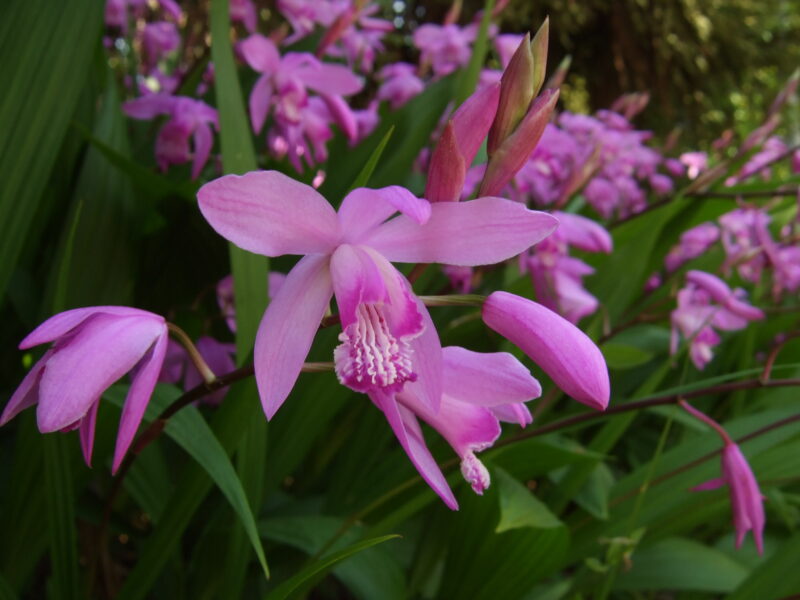
Bletilla, also known as Chinese ground orchid, is a unique perennial that can bring the allure of the tropics to your shade garden. This hardy orchid tolerates a variety of conditions, blooming in shades of purple and white in late spring to early summer.
Bletilla thrives in well-drained, humus-rich soil and prefers partial shade. It is best planted in clumps to create a more substantial impact in your garden. As the plant matures, it can naturalize and form attractive colonies, providing a lush scene year after year.
Bluebells
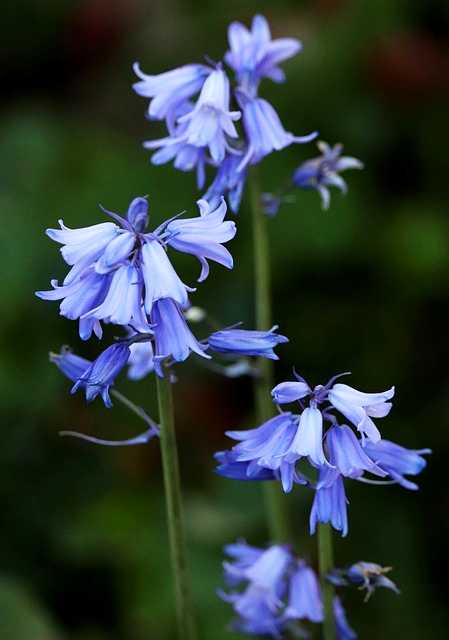
Bluebells (Hyacinthoides non-scripta) are an enchanting sight in any garden, especially in shady spots. Their nodding, bell-shaped flowers form cascading clusters, creating a stunning blue carpet in spring. As they grow, they create a mesmerizing sea of color that can be both calming and invigorating.
These perennials thrive in moist, well-drained soil and can often be found in woodland areas. They prefer dappled sunlight but can settle into full shade as well. Bluebells are excellent naturalizers, meaning they’ll spread over the years, offering even more beauty as time passes.
Bunchberries

Bunchberries (Cornus canadensis) are low-growing, perennial plants that showcase delicate, white flowers in late spring. These native plants produce bright red berries in the summer, adding vibrant color against the rich green foliage. They are an excellent choice for woodland gardens or shaded areas as they thrive in well-drained soil and cooler temperatures.
Bunchberries prefer partial to full shade and flourish in moist, acidic conditions. As a native plant, they attract various pollinators, making them a delightful addition that supports local biodiversity. Their growth pattern forms a neat mat on the ground, decreasing weed competition.
Calendula
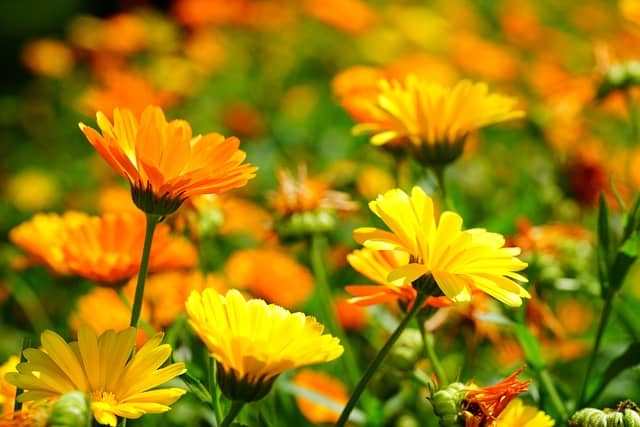
Commonly known as pot marigold, Calendula is not only a bright flower but also an excellent addition to your shade-friendly garden. Known for its bright yellow to orange blooms, Calendula is quite versatile and can bloom from early spring until late fall, providing sunshiny color wherever planted.
Although Calendula thrives in full sun, with the right conditions, it can still grow moderately well in partial shade. It prefers well-drained soil but is tolerant of poorer soils. Plus, this plant often attracts beneficial insects, such as ladybugs and hoverflies, promoting a healthy ecosystem in your garden.
Celandine Poppy
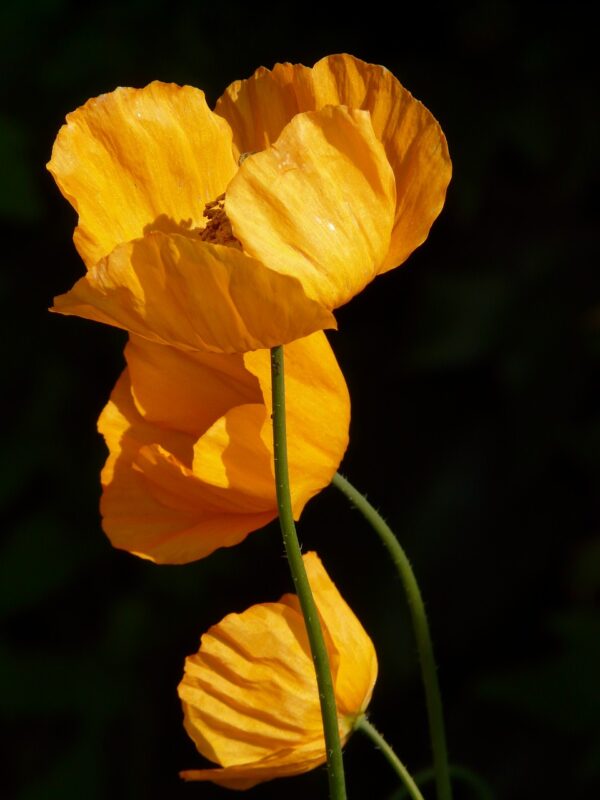
Celandine Poppy (Stylophorum diphyllum), with its cheerful yellow blooms, is a great choice for moist, shady gardens. This perennial adds brightness to darker areas from mid-spring to early summer with its cup-shaped flowers.
This native plant prefers rich, well-drained soil and can grow under trees or in shaded beds easily. Celandine Poppy is renowned for its ability to self-seed and naturalize in gardens, making it an excellent choice for creating naturalistic landscapes. Its foliage remains lush throughout the growing season, offering continuous beauty until it dies back in winter.
Coleus
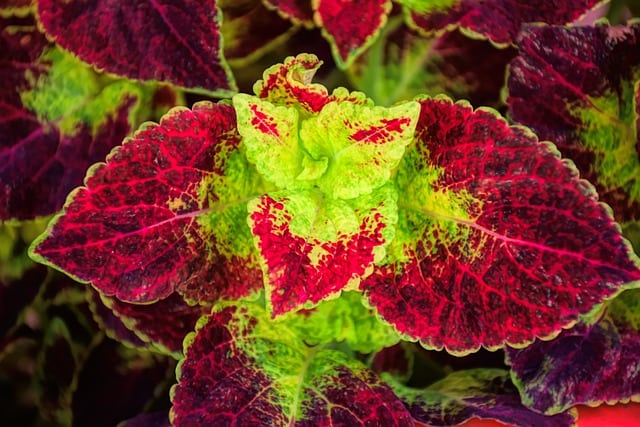
Coleus is one of the most vibrant shade-loving plants you can include in your garden. With its stunning, colorful foliage ranging from deep purples to bright chartreuse, Coleus is primarily grown for its leaves rather than its flowers. This adaptability makes it an excellent choice for this shade-focused theme.
Coleus performs best in part shade, making it perfect for brightening up the darker corners of your garden. It’s crucial to keep the soil consistently moist, especially in hotter climates. While they are often treated as annuals in colder regions, those in warmer climates can enjoy them as perennials.
Columbines
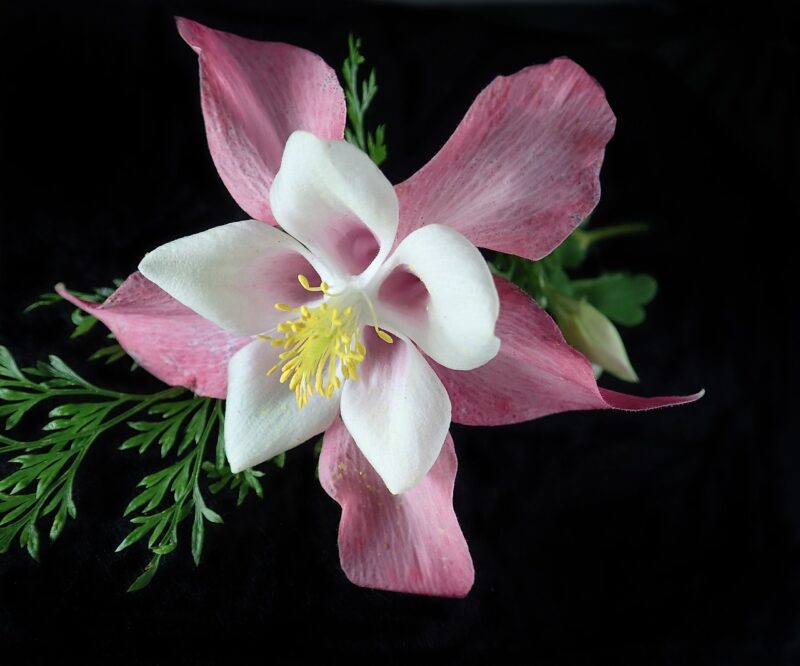
Columbine (Aquilegia) is charming perennial with distinct, spurred flowers that appear in a variety of colors including blue, purple, pink, and white. These enchanting blooms attract hummingbirds and butterflies, adding liveliness to the garden.
Columbines thrive in well-drained soil and can flourish in both full sun and partial shade. They prefer cooler conditions, making them ideal for those shadier areas. This perennial also offers a delightful fragrance and interesting leaf shapes, contributing to the garden’s overall aesthetic.
Common Bleeding Heart
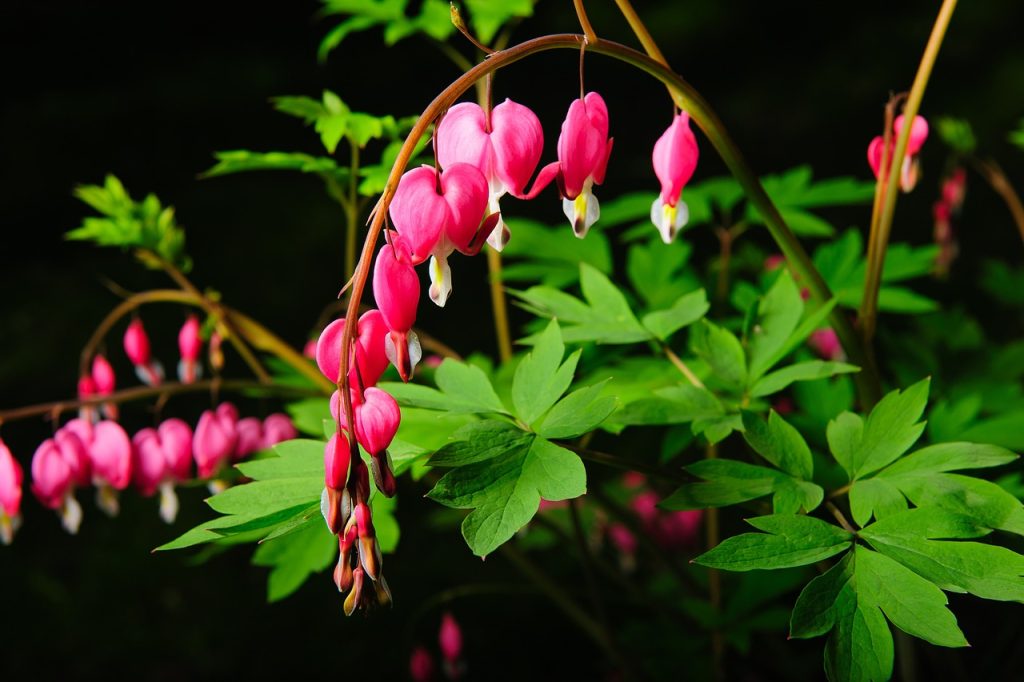
The Common Bleeding Heart (Dicentra spectabilis) is a romantic perennial known for its heart-shaped flowers. In shades ranging from soft pink to bright white, these blooms create an emotional atmosphere when planted in lush, shady areas.
Bleeding hearts thrive in well-drained, enriched soils and are most successful in partial shade. They need regular watering to maintain humidity around the roots. This perennial is an excellent choice for woodland gardens or cottages, adding a soft, delicate touch.
Corydalis
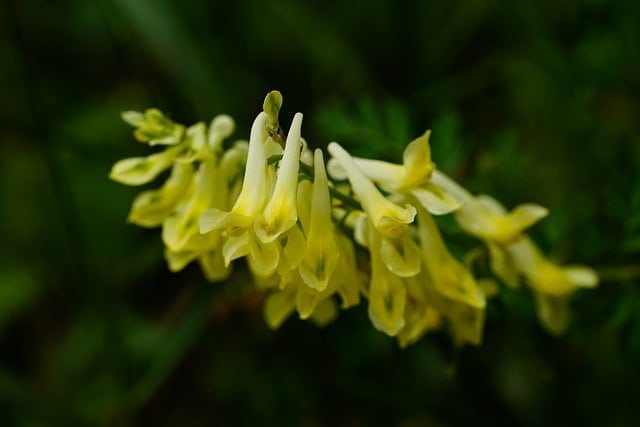
With its unique, fern-like foliage and delightful flowers, Corydalis is an excellent perennial for shaded areas. It produces dainty, tubular flowers in a range of colors, including blue, yellow, and purple, often in abundance throughout the spring.
Corydalis prefers well-drained soil, ideally in partial shade, and can tolerate drier conditions once established. This plant often self-seeds, making it a wonderful choice for naturalizing in glades or woodland settings. Its subtle beauty and charm make it a perfect addition to any shade garden.
Creeping Jenny
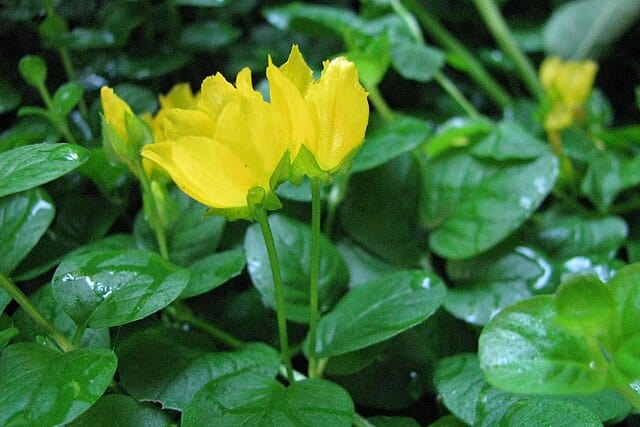
Creeping Jenny (Lysimachia nummularia) is the ultimate ground cover for shade gardens. With its lush green leaves turning to bright gold in the fall, Creeping Jenny provides year-round interest. Its delightful yellow flowers appear in late spring, adding another layer of cheer.
This versatile perennial thrives in a range of soil conditions, preferring moist, well-drained environments. It flourishes in partial to full shade, making it an ideal candidate for less sunny spots. Creeping Jenny is resilient and often used to control erosion, helping to make your garden both beautiful and functional.
Creeping Veronica
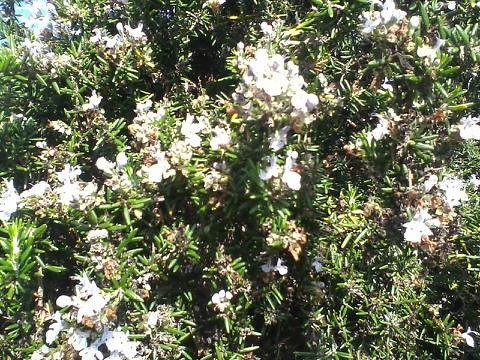
Creeping Veronica (Veronica repens) is a charming ground cover that thrives in partial shade. With delicate, blue flowers that bloom in spring, it offers a splash of color against a backdrop of green foliage.
This perennial flourishes in well-drained soil, and its creeping habit makes it perfect for filling in gaps in your shade garden. It tolerates a variety of soil types and drought conditions once established. Creeping Veronica is not only beautiful but also practical, as it helps suppress weeds and can elegantly cascade over garden borders.
Daylily
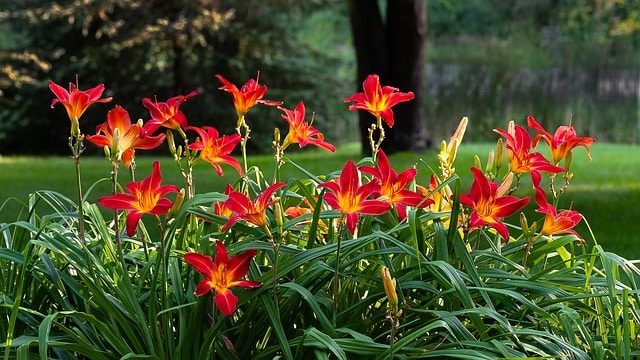
Daylilies (Hemerocallis) are beloved perennials for many reasons, most notably their adaptability. While they thrive in full sun, many varieties can manage quite well in partial shade. Their bright, trumpet-shaped flowers bloom for just one day, but plants can have multiple blooms that create a lovely visual display over several weeks.
Daylilies prefer well-drained soil but are forgiving and can thrive in less-than-ideal conditions. They are excellent for beginners thanks to their resilience and minimal care requirements. Daylilies come in various colors, shapes, and sizes, and they pair beautifully with other shade-loving plants.
Epimedium
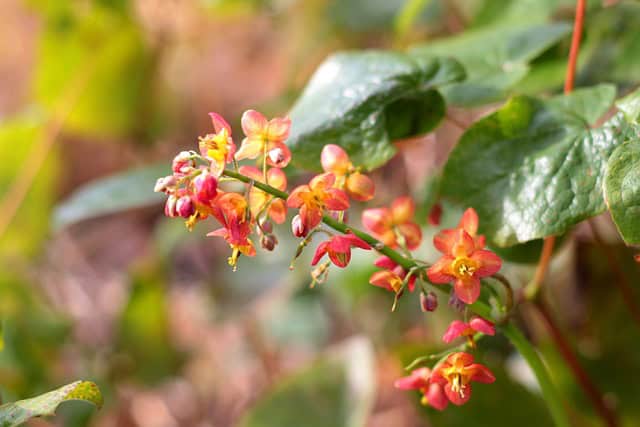
Epimedium, commonly known as barrenwort or fairy wings, is a fantastic small perennial for shady areas. With delicate, heart-shaped leaves often tinged with red or purple, it creates a lush carpet in your garden. Its charming flowers, resembling tiny orchids, bloom in spring and can come in shades of yellow, white, and pink.
This plant flourishes in well-drained soils and prefers partial to full shade, making it ideal for woodland gardens. Epimedium is a tough plant, known for its ability to tolerate drought and poor soil conditions. Its unique foliage persists throughout the year, providing visual appeal even during the dormant months.
Foamflower
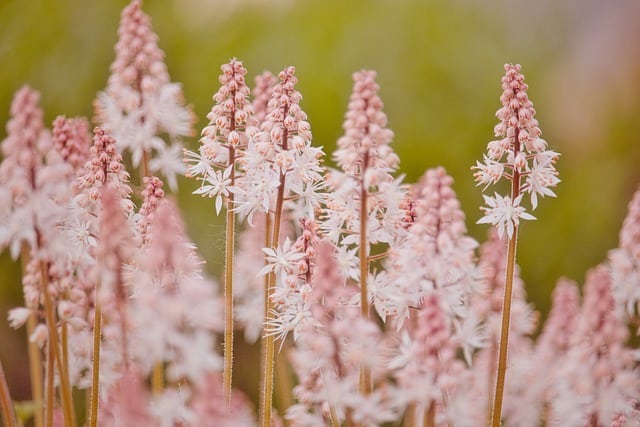
Foamflower (Tiarella cordifolia) is a unique perennial that brings effervescence to the shade garden with its frothy clusters of tiny white or pink flowers that bloom in spring. Adding to its charm, the attractive heart-shaped leaves emerge in vibrant green, often with intricate marbling.
This plant thrives in rich, moist, well-drained soil, especially in partial to full shade. Foamflower loves woodland conditions, forming beautiful colonies that thrive together. Its ability to attract pollinators makes it an excellent choice for promoting a healthy garden ecosystem.
Forget-Me-Not
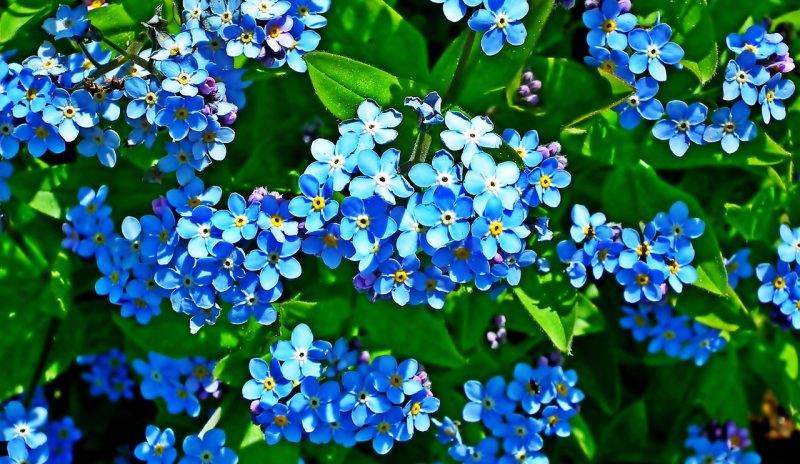
Forget-Me-Nots (Myosotis sylvatica) are iconic perennials that symbolize love and remembrance. Their charming clusters of small blue flowers bloom in early spring, creating a lovely carpet of color in shaded areas.
These delicate plants prefer rich, consistent moisture and can thrive in partial shade. They often self-seed, ensuring future generations of this beautiful flower continue to brighten your garden. Beyond their visual appeal, Forget-Me-Nots are also known to attract pollinators, making them a beneficial addition to any landscape.
Foxglove
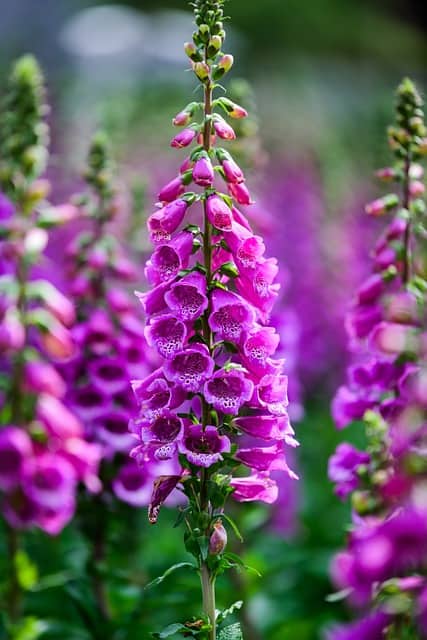
With their tall spires of tubular flowers, Foxglove (Digitalis purpurea) adds a touch of drama to shade gardens. Blooming in various colors from purple to white, these striking perennials grow best in the cooler months and can tolerate partial shade.
Foxglove prefers moist, well-drained soil enriched with organic matter. It’s essential to keep them watered, especially in dry spells, and they often self-seed for future blooms. While they bring incredible beauty to your landscape, ensure not to plant them where children or pets have access, as they can be toxic if ingested.
Fuchsia
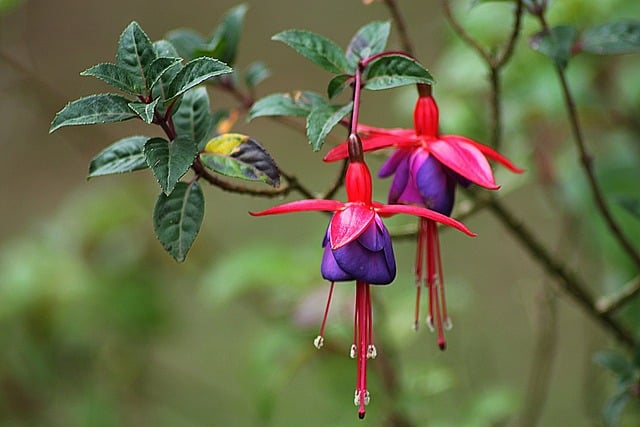
Fuchsia plants are a delight for shade gardens, recognized for their unique, drooping flowers that come in various shades of pink, purple, and red. These plants can add a touch of elegance and whimsy to your garden, and they thrive in cooler, shaded areas where other plants might struggle.
Fuchsia prefers moist, well-drained soil and does best in partial shade, ideally away from harsh afternoon sun. They’re somewhat frost-sensitive, so providing some winter protection can go a long way in maintaining their vigor. Happy fuchsia plants are known for attracting hummingbirds with their nectar-rich flowers, adding even more charm to your shaded oasis.
Goat’s Beard
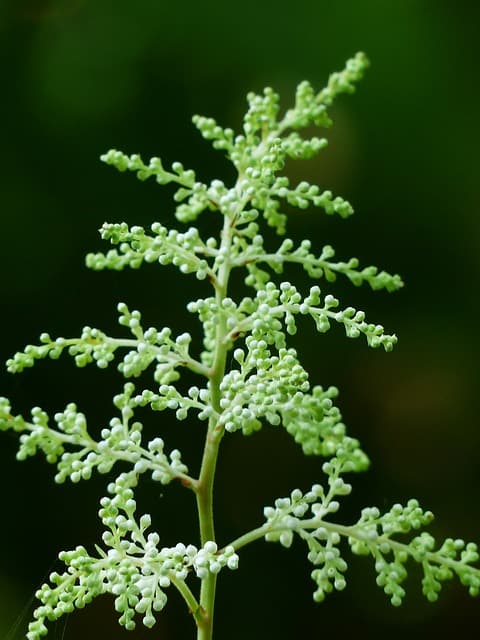
Goat’s Beard (Aruncus dioicus) is an incredible perennial that can add a touch of drama to a shade garden. Its large, feathery plumes of white flowers add a unique vertical interest to your landscape in late spring to early summer. The foliage resembles that of a fern and can create a lush backdrop in shady areas.
Goat’s Beard thrives in rich, moist, well-drained soil and prefers partial to full shade. Once established, it can tolerate some drought but flourishes with ample moisture. Its ability to naturalize makes it a great addition for woodland gardens, creating a sense of tranquility and natural beauty.
Green and Gold
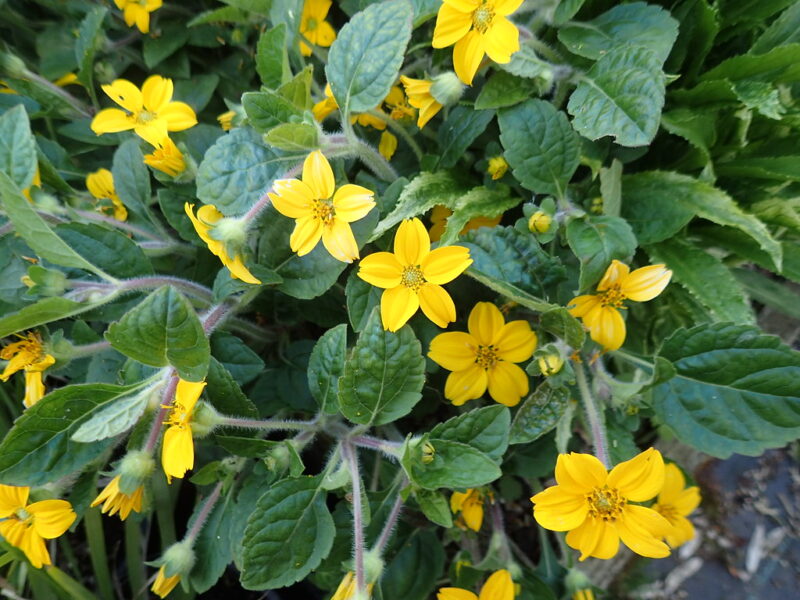
Green and Gold (Chrysogonum virginianum) is a charming ground cover perennial that thrives in shaded environments. With its distinctive green leaves and bright yellow flowers that bloom profusely in spring, it creates a captivating carpet of color.
This hardy perennial prefers well-drained, moist soil and performs best in partial shade. Its low-growing habit makes it an excellent choice for filling in bare spots, suppressing weeds while providing a pop of sunshine in shaded areas. Additionally, it’s deer resistant, ensuring it remains a vibrant part of your landscape.
Hakonechloa
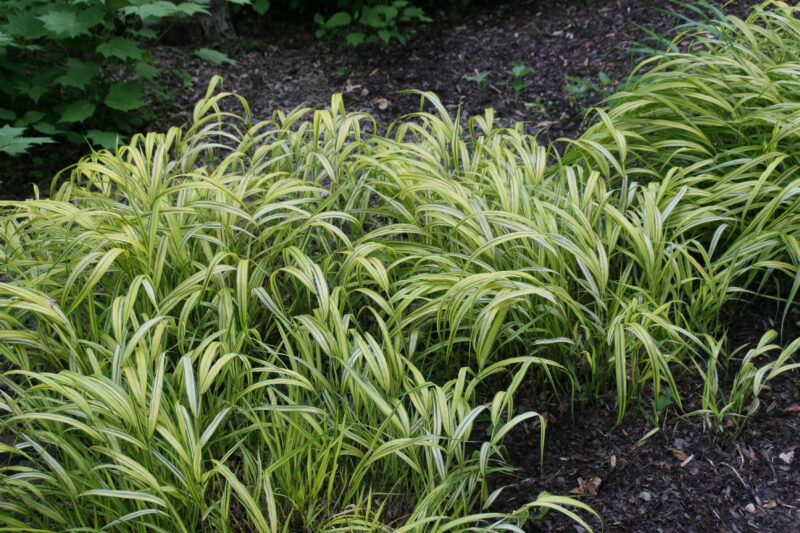
Hakonechloa, commonly known as Japanese forest grass, is a stunning ornamental grass that adds a soft, rolling texture to shaded gardens. This perennial is prized for its arching, bamboo-like foliage that can range from green to gold, depending on the variety. The delicate movement of the grass in the breeze creates a picturesque effect.
Hakonechloa thrives in well-drained, rich soil and prefers partial shade. It grows well around ponds and in woodland gardens. Providing consistent moisture is key to keeping this grass healthy, especially during the hotter months. This graceful grass can partners beautifully with many shade-loving perennials and shrubs.
Hardy Begonia
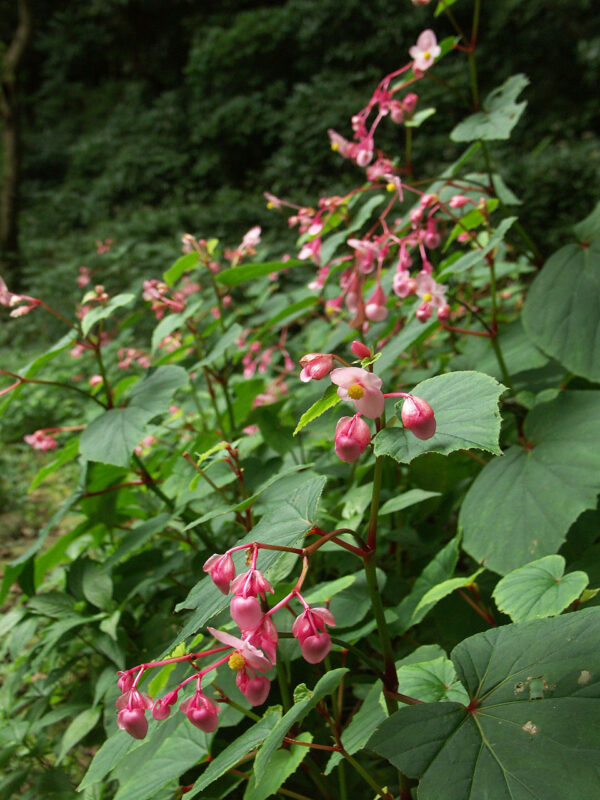
Hardy begonias (Begonia grandis) are a wonderful choice for shaded, moist areas and can add vibrant color with their pink or white flowers that bloom in late summer. Known for their attractive, glossy leaves, these begonias can create a lush, tropical feel in your garden.
These perennials thrive in well-drained soil that remains consistently moist. Hardy begonias prefer dappled shade, making them perfect for under trees or beside shaded pathways. They’re also known for their resilience, allowing them to survive in a variety of conditions. In fall, the leaves can take on a lovely yellow hue, extending the visual interest of your garden.
Heucheras
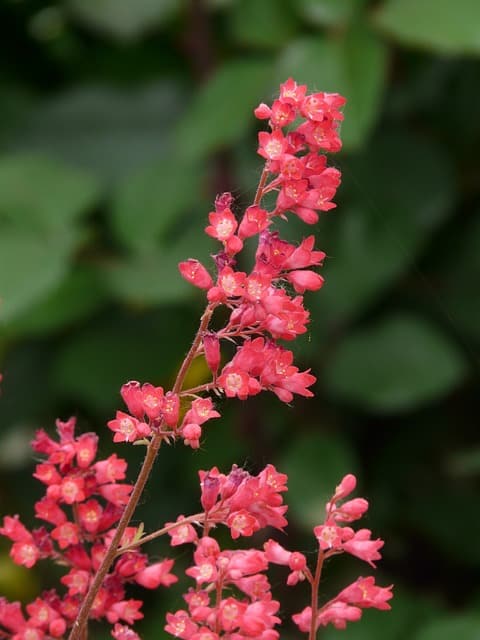
Heucheras, also known as coral bells, are stunning perennials celebrated for their colorful foliage that comes in a variety of shades, including deep burgundy, lime green, and caramel. They produce delicate flower spikes that can add height and interest to your shade garden.
These adaptable plants prefer well-drained soils and can thrive in partial to full shade. Heucheras are low-maintenance and do well in containers or as underplantings to taller plants. They are also excellent at resisting pests and drought once established, making them perfect for beginners looking for colorful and reliable additions to their shade garden.
Hosta
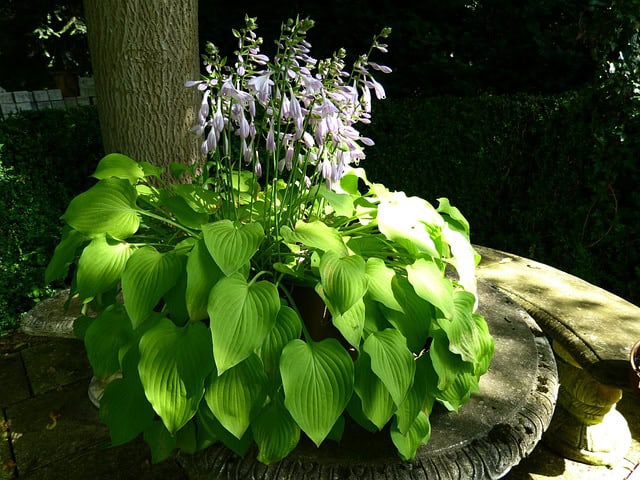
Hostas are arguably the quintessential shade plant, known for their lush foliage and wide variety of shapes, sizes, and colors. They flourish in partial to full shade and can create impressive foliage displays that last throughout the summer and into fall. Often categorized by their leaf size—ranging from tiny to monumental—hostas provide structure and texture to shaded areas.
These perennials prefer rich, well-drained soil and require regular watering, especially in dry periods. Hostas are generally low-maintenance, but they benefit from occasional division every few years to promote healthy growth. With their stunning foliage and ability to thrive in shade, they’re a popular choice for many gardeners.
Impatiens
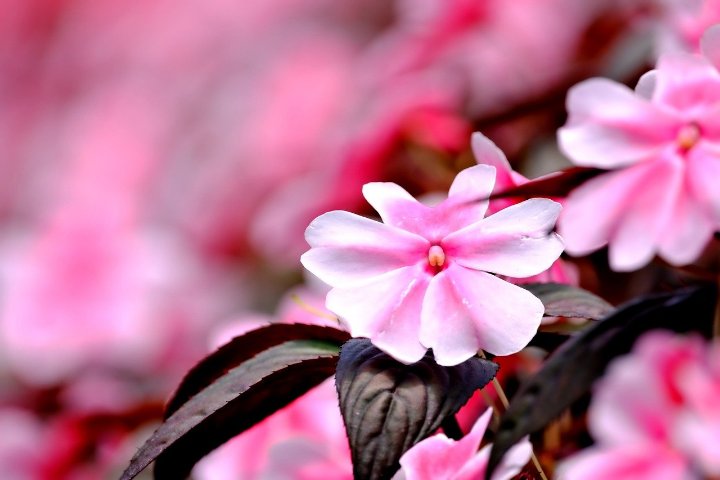
Impatiens are popular annuals often used in shade gardens, but many gardeners don’t realize that there are perennial varieties hybridized to thrive even in lower light conditions. These vibrant blooms add splashes of color, available in shades like pink, red, white, and purple, making them perfect for brightening up shaded corners.
With their preference for well-drained, moist soil, impatiens thrive best in partial to full shade. Regular watering is essential for them to flourish, as they can suffer when the soil dries out. Their ability to tolerate humidity and quick growth make them ideal for creating instant color in your shade garden, perfect for beginners seeking a quick and showy infusion of life.
Indian Pink
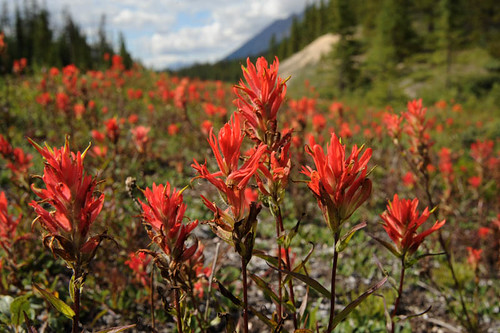
Indian Pink (Spigelia marilandica) is a striking perennial known for its unique tubular flowers that bloom in bright red-orange shades. This eye-catching plant blooms in late spring to early summer and attracts hummingbirds and butterflies, adding life and movement to your shade garden.
Indian Pink thrives in rich, well-drained soil that remains moist. It prefers partial shade and can grow well in woodland gardens. While it is relatively easy to care for, providing some winter protection in colder climates can help ensure its health and vigor year after year.
Jacob’s Ladder
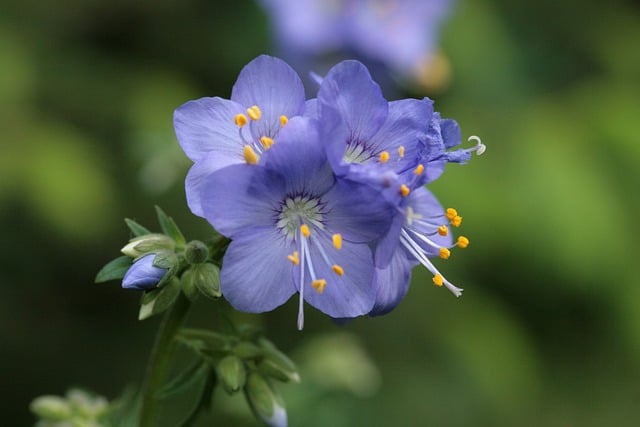
Jacob’s Ladder (Polemonium caeruleum) is a beautiful perennial that brings a touch of elegance to the shade garden. With its delicate, fern-like foliage and clusters of bell-shaped blue flowers in spring, it creates an enchanting visual interest.
This hardy plant thrives in moist, well-drained soil and prefers partial shade. It can adapt to a variety of soil types, making it a versatile choice for your garden. Jacob’s Ladder is a great addition to woodland gardens and can form attractive colonies, offering a serene backdrop to larger plants and flowering perennials.
Japanese Anemones
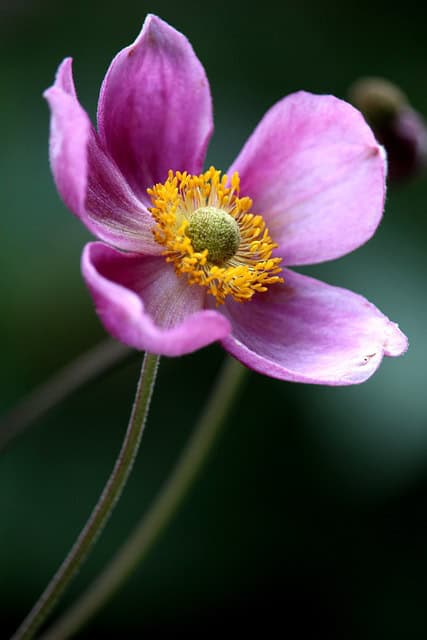
Japanese Anemones are elegant perennials that bloom in late summer to fall, providing valuable color when many other plants have finished blooming. With their delicate, cup-shaped flowers in shades of white and pink, these plants can create a stunning display in your shade garden.
They prefer well-drained soil and thrive in partial to full shade. Once established, Japanese Anemones are relatively low-maintenance and can spread to form attractive clumps that bring lasting beauty. Their untamed look and tolerance for various soil types make them a fantastic choice for informal landscapes.
Lamb’s Ear
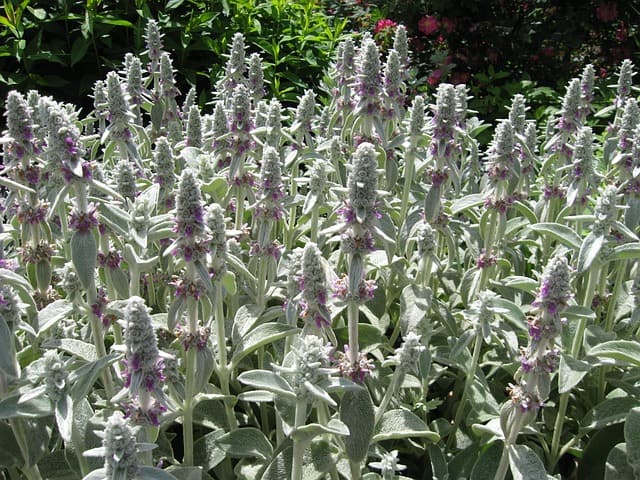
With its unique silvery-gray foliage, Lamb’s Ear (Stachys byzantina) adds a wonderful texture to shade gardens. The soft, fuzzy leaves create a lush backdrop for other plants, and while this perennial does flower, it’s primarily valued for its attractive leaves.
Lamb’s Ear thrives in well-drained soil and prefers a sunny to partially shaded location. It is drought-tolerant, making it perfect for less demanding garden spaces. This perennial is also quite hardy and can withstand dry spells, making it ideal for beginners looking for little maintenance.
Lenten Roses
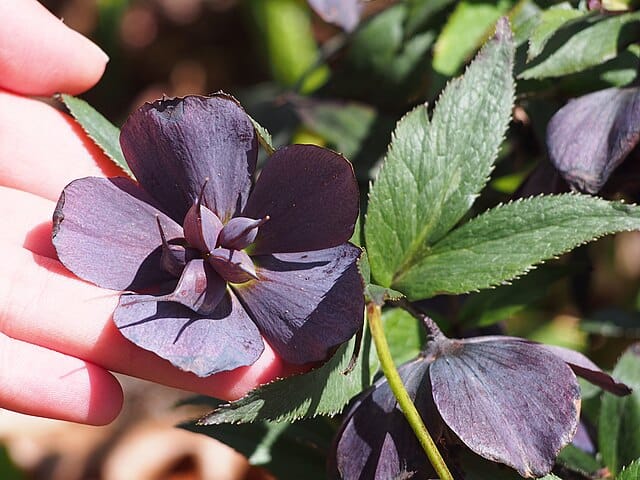
Lenten Roses (Helleborus) bring early color to shade gardens, blooming with stunning flowers that can last from winter into spring. With flower colors ranging from deep burgundy to pale pastels, this perennial adds sophistication and beauty even during the cold months.
Lenten Roses thrive in rich, well-drained soil and prefer partial to full shade. They are relatively tolerant of dry conditions once established, making them a durable choice for shaded areas. With their unique blooms and foliage, they create an attractive visual experience while inviting early-season pollinators.
Leopard Plant
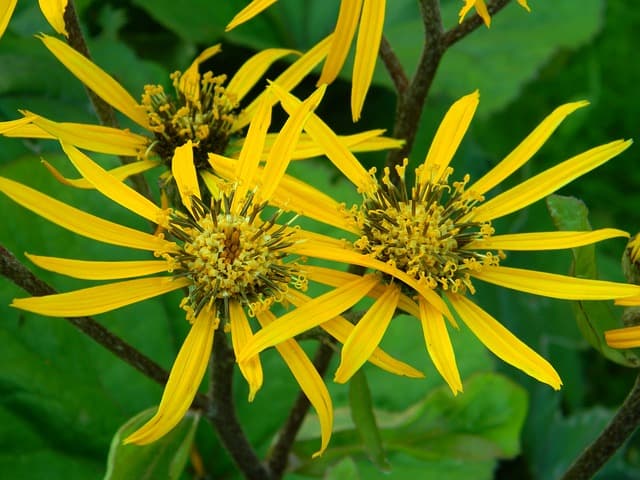
Leopard Plant (Farfugium japonicum) is a bold perennial that is notable for its large, glossy leaves that can bring a tropical feel to shaded areas. With distinct yellow flowers held on tall stems, this plant blooms in early fall, allowing for a late burst of color.
Leopard Plants thrive in rich, well-drained soil and prefer partial to full shade. They’re also relatively low-maintenance, requiring regular watering to ensure they remain healthy. Their large foliage creates a dramatic effect in any garden, and they’re particularly effective when planted in groups or blended with other shade-loving plants.
Lily of the Valley
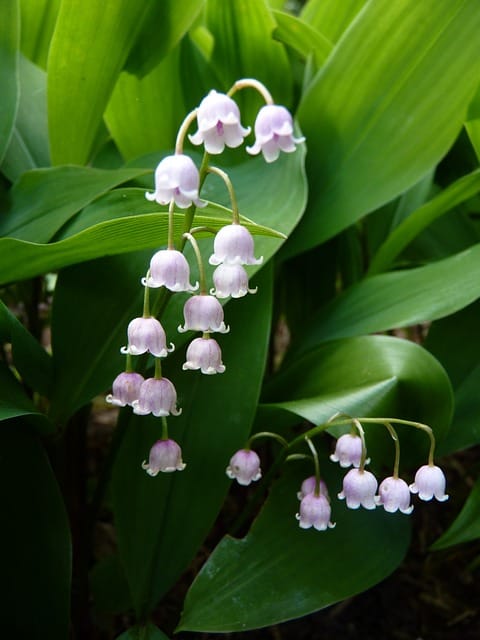
Lily of the Valley (Convallaria majalis) is a classic shade perennial known for its fragrant, bell-shaped flowers that bloom in early spring. With its lovely clusters of white flowers surrounded by lush green foliage, it adds a sweet, enchanting aroma to shaded areas.
This beautiful plant prefers moist, well-drained soil and thrives in partial to full shade, making it ideal for woodland gardens. Once established, it can spread quickly, forming attractive colonies that create a sense of lushness. Be cautious, though, as all parts of this plant are toxic if ingested.
Lobelias
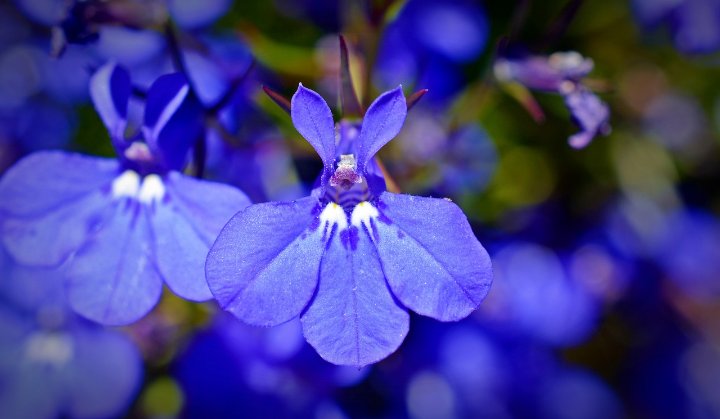
Lobelia is a graceful, low-growing perennial that adds richness to shaded gardens with its vibrant blue, purple, or white flowers. Blooming in summer, these lovely plants create stunning cascades of color around pathways and garden borders.
Lobelias prefer consistently moist, rich soil and thrive in partial shade to full shade. They are relatively low-maintenance and can work well in containers, hanging baskets, or as ground cover in shaded areas. Their compact size and prolific blooming habits make them a delightful choice for garden novices.
Mourning Widow Geranium
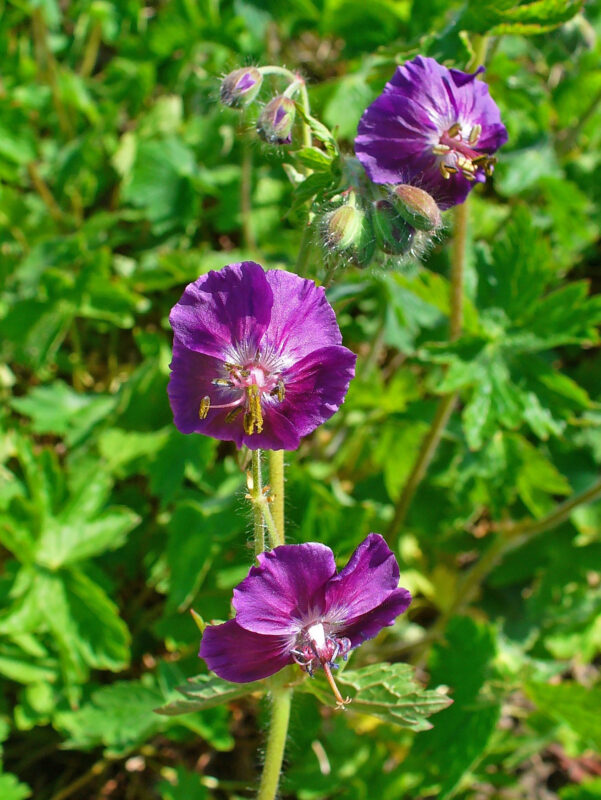
Mourning Widow Geranium (Geranium phaeum) is a charming perennial known for its unique, dark foliage and rich purple flowers. This hardy plant blooms from late spring to early summer, making it a welcome addition to shaded spaces.
Mourning Widow Geranium thrives in well-drained soil and prefers partial to full shade. It’s a resilient plant that flourishes with minimal maintenance. Its spreading habit makes it an excellent choice for ground cover, helping control weeds while offering a visual anchor in the shade garden.
Oakleaf Hydrangea
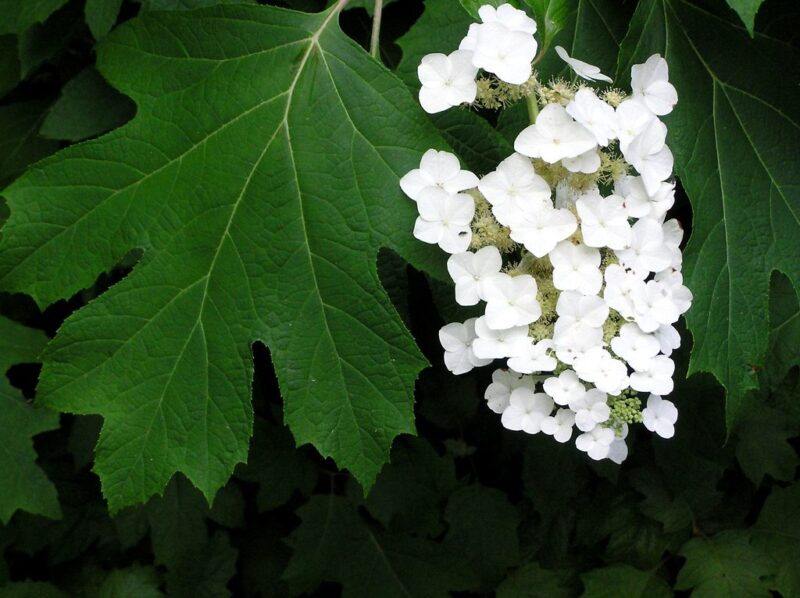
The Oakleaf Hydrangea (Hydrangea quercifolia) is a stunning shrub that brings beauty to shade gardens. With its large, oak leaf-shaped foliage that turns brilliant shades of red and orange in fall, this plant provides year-round interest.
This hydrangea prefers moist, well-drained soil and thrives in partial shade. Its unique flowers, which bloom in summer, transition from white to pink as they mature, adding dynamic color to the garden. Oakleaf Hydrangeas are relatively low-maintenance and make an excellent backdrop for other perennial blooms.
Peach-Leaved Bellflower
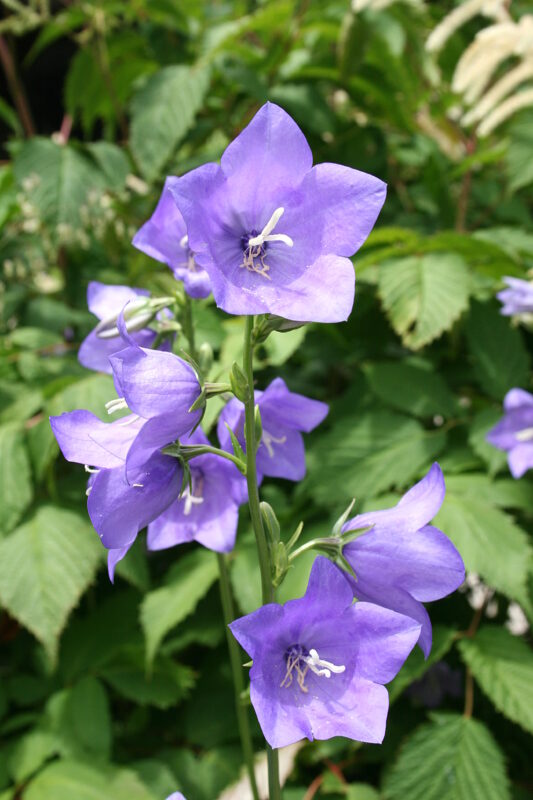
Peach-Leaved Bellflower (Campanula persicifolia) is a lovely perennial that produces delicate, bell-shaped flowers in shades of blue and white. Blooming in late spring to early summer, they promise a graceful touch to your shade garden.
These plants prefer well-drained soil rich in organic matter and thrive in partial shade. Peach-Leaved Bellflowers are relatively easy to care for and can attract pollinators, making them a dual-purpose addition to your garden’s ecosystem. Their elegant blooms create a lovely contrast against the greenery around them.
Peony
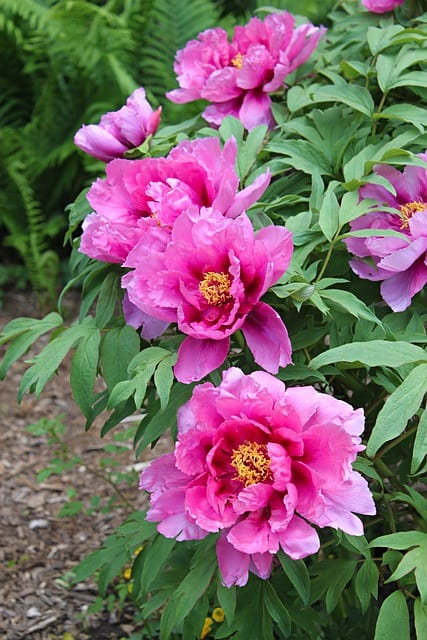
Peonies are cherished perennials in many gardens, known for their lush, fragrant blooms that can be pink, red, white, or yellow. While they prefer full sun, many varieties do surprisingly well in light shade. Their earthy, bushy growth adds structure and beauty to any planting scheme.
These robust perennials thrive in well-drained, rich soil and prefer regular watering during dry spells. Once established, peonies are long-lived and can provide annual blooms for years with minimal care. They can be a stunning centerpiece in your shade garden or serve as a beautiful backdrop for other shade-loving plants.
Red Leafed Mukdenia
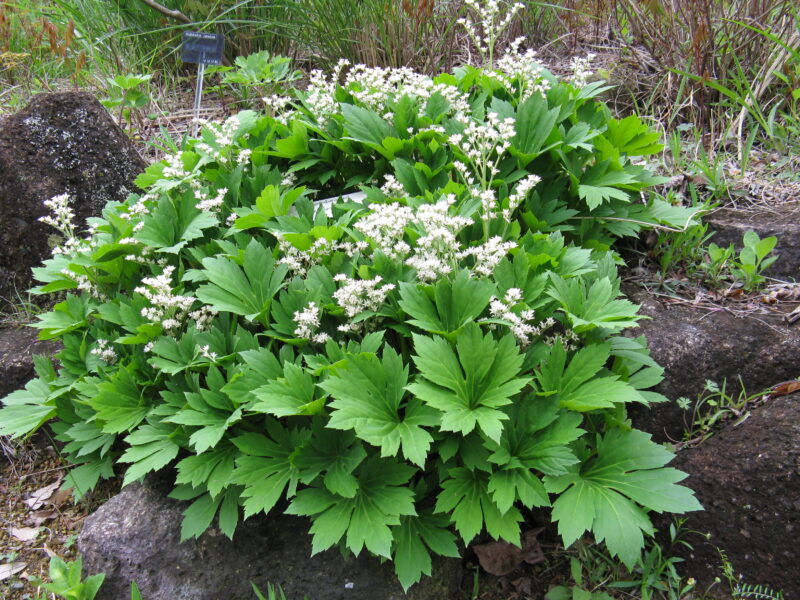
Red Leafed Mukdenia (Mukdenia rossii) is a striking perennial that adds both color and texture to shaded areas. Known for its unique, deeply lobed leaves that turn brilliant shades of red in the fall, this plant can really make a statement in your landscape.
This perennial flourishes in well-drained, rich soil and prefers partial to full shade. Mukdenia is relatively drought-tolerant once established, making it a low-maintenance option for busy gardeners. Its foliage adds a splash of color when many other plants are fading, ensuring your shaded areas remain visually stimulating.
Rhododendron
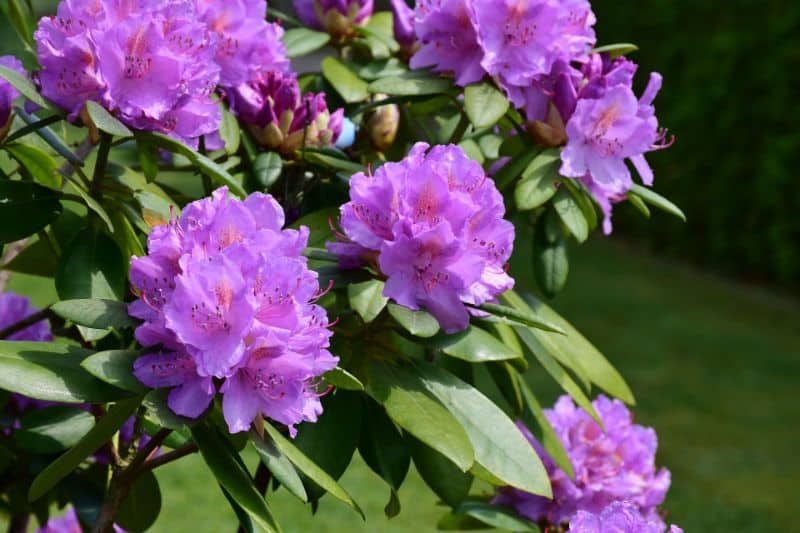
Rhododendrons are classic favorites for shade gardens; their large, showy blooms create a dramatic impact in dark spaces. With a wide variety of colors ranging from vibrant pinks to whites and purples, these shrubs can provide ample color from spring through summer.
These perennials prefer acidic, well-drained soil and thrive in partial shade. It’s important to keep them consistently watered, especially during dry spells. While they can be somewhat high-maintenance depending on the variety, they reward care with unparalleled beauty and lush foliage.
Sedum
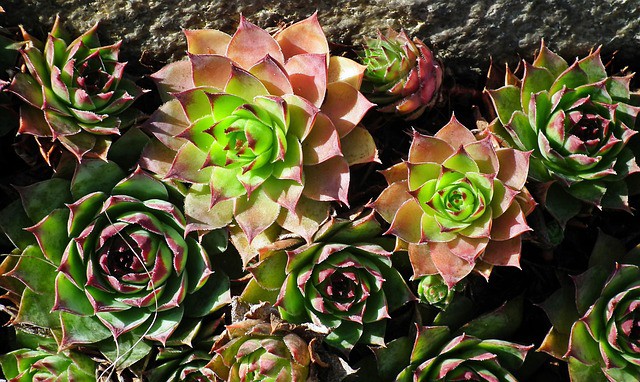
Sedum, often known as stonecrop, encompasses a diverse group of succulents that thrive in various conditions, including some that do well in shade. With their fleshy leaves and clusters of small star-shaped flowers, Sedums bring a unique texture and visual interest to the garden.
For shaded varieties, they prefer well-drained soil and can adapt to partial shade. Regular watering is recommended, especially during dry spells. Their drought-resistance, adaptability, and low-maintenance nature make them an excellent choice for busy gardeners looking to add hardy beauty to their shaded areas.
Siberian Bugloss
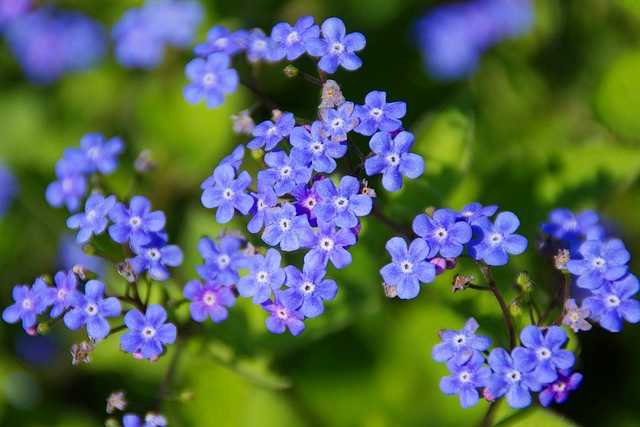
Siberian Bugloss (Brunnera macrophylla) is a classic perennial known for its heart-shaped leaves and delicate blue flowers that bloom in spring, reminiscent of Forget-Me-Nots. This plant is perfect for brightening up shaded spots with its striking foliage and dainty blooms.
Siberian Bugloss thrives best in rich, well-drained soil and prefers partial to full shade. Its ability to spread and form attractive clumps makes it an excellent choice for creating ground cover and enhancing the beauty of shaded gardens. This perennial is also appreciated for its deer resistance and adaptability.
Spotted Dead-Nettles
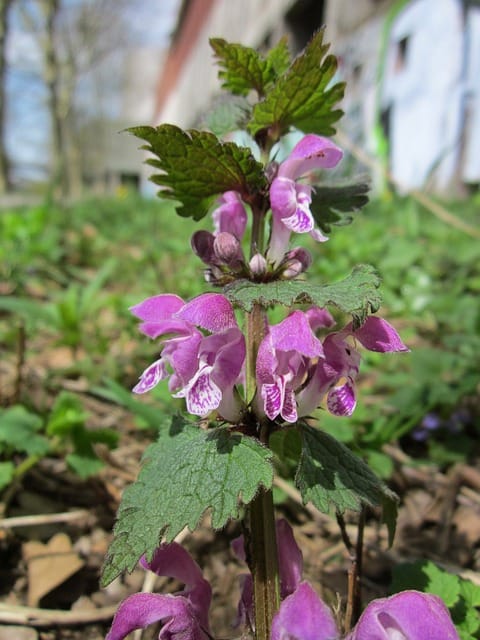
Spotted Dead-Nettles (Lamium maculatum) are fantastic ground cover options for shaded areas, with their unique foliage and charming flowers. The leaves can have interesting variegated patterns, often with silver or cream margins, making them visually appealing throughout the year.
These perennials prefer well-drained soil and thrive in partial shade. They are low-maintenance and can quickly spread to fill in bare patches in your garden. Adding Spotted Dead-Nettles not only provides texture and color but also serves as a reliable ground cover that helps suppress weeds.
Toad Lily
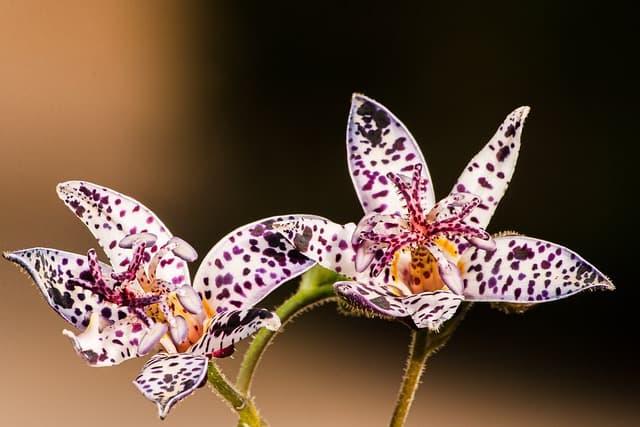
Toad Lily (Tricyrtis) is a unique perennial that adds an exotic flair to the shade garden. With intricate, orchid-like flowers that bloom in late summer to early fall, Toad Lilies bring a delightful surprise when many other flowers have faded.
These perennials thrive in rich, well-drained soil and prefer partial to full shade. They benefit from regular watering, especially in dry conditions. Toad Lilies are relatively low-maintenance, thriving quietly amidst other perennials, and making them an excellent addition for gardeners looking for something a bit different.
Vinca Minor

Vinca Minor, or lesser periwinkle, is a fabulous ground cover that can thrive in shaded areas. With its evergreen foliage and charming purple flowers, it provides color and interest throughout different seasons.
These hardy plants prefer well-drained soil and grow well in partial to full shade. Vinca Minor is known for its ability to spread quickly, creating a lush, carpet-like effect that helps suppress weeds. This makes it a valuable asset in any garden design, especially in shady spots where other plants may struggle.


